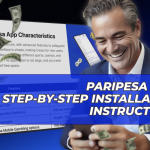“Design thinking is a human-centered approach to innovation that draws from the designer’s toolkit to integrate the needs of people, the possibilities of technology, and the requirements for business success.” — Tim Brown, CEO of IDEO
How do you stay relevant without disrupting growth and profitability?
To overcome these challenges, thriving businesses need to branch out into new markets and learn the behavior of future customers. How do you do that effectively? Design thinking. Design thinking is a strategic process that applies the principles of design to solve multifaceted business problems and learn more about the unknown. Using a human-centered approach to integrate the needs of people, combined with the possibilities of technology, allows business to solve simple or complex problems while staying relevant and not disrupting growth.
How is the design thinking process broken down?
1. Define the problem and learn from people through customer integration research. First steps will be a two-part process. Define the problem your business faces or develop an idea. You may decide to enter new markets, develop new services or change the behavior of a target audience.
The next area of opportunity is integrated research into your customers and future customers. Read and monitor online forums and conversations; pay attention to customer feedback; take in aired grievances and ask questions. At this point, we are not looking for evaluations of features or cost but identifying pain points and needs of the people.
Our next step will be talking with unexpected experts. What does the receptionist say about the company’s customer experience? If you are in manufacturing, talk to the employees, not the executives. If you make a physical product, speak to the repairman or technician about what goes wrong or for other insights you can gleam.
Lastly, interview your customers. Develop a list of a few open-ended questions to ask current and future customers. This task will require you to spend time with customers, interacting in their own environment. In some cases, the interview may be done over the phone, depending on the business, but never through email. If possible, watch them interact with your products or services if you are in a retail environment. Press on the details with every question. Help understand the decision-making process through “the 5 why principle” and “Can you tell me more about that?” This process should help direct you to new opportunities, and hopefully, some surprising responses.
2. Find patterns from inspiration and research. To inspire a human-centered approach to innovation, empathy is our go-to resource. Once your research and inspiration is compiled, capture your information and insights on various post-it notes. Spread them throughout your research area with your team, and use informed intuition to identify patterns, recognize themes and find meaning.
Many design thinking professionals utilize an empathy map of “do, think, feel and say” to categorize types of insights through a matrix. This creative process should allow you to narrow your focus, so you can apply the principles of design through one or several key insights.
3. Ideation and experimentation with key insights. Now is the time to reach for the stars and explore new possibilities. Generate countless ideas based off your key insights, and have the willingness to consider many divergent options. The most promising ideas are advanced into rapid prototyping, a stage of early, rough conception of ideas that are sound enough for people to react to. The key to this process is to be quick and dirty, allowing us to explore a wide range of ideas without becoming too invested in only our favorite. This experimental process creates a design loop that helps improve existing concepts and develop new ones.
At this stage we look for feedback from end users and major stake holders to adapt our human-centered design solutions. Experimentation can include creating penciled design solutions, acting out a new customer service experience or even running a test market to evaluate product, positioning or price points accordingly.
4. Implementation. Once you have a winner and the design has been refined with critical feedback, it is important to prepare a road map to the marketplace. Identify activities, capabilities and resources your company will need to actually produce and market the product, service or solution. Some road maps will be built in phases, depending on which elements of the products or services are involved. Introducing a new technology platform will have a much different road map than launching a new school program. More and more companies, across a variety of industries, are starting to launch new products and services in order to learn more about their customers. They live in BETA because data is valuable, and the market loop that is created allows them to further refine their offerings.
At The Fowler Group we believe successful innovation solutions start around a human-centered design approach. Having a deep empathy with people makes our observations powerful resources for inspiration and design driven solutions. It is our responsibility to understand why your customers do what they currently do, with a heavy emphasis on what they might do in all future interactions. We must never forget: we are designing for real people.
With a combined 40+ years of experience in old and new school advertising and design, The Fowler Group has a wide resource of skills that can help any company find the right path forward when considering a start-up launch, introducing a new product/service or expanding into new markets. We just ask one thing – love what you do, and we’ll love working for you.
“The minute you understand that you can poke life and actually something will…pop out the other side, that you can change it, you can mold it, that’s maybe the most important thing…Once you learn that, you’ll never be the same again.” — Steve Wozniak
Here are some of our favorite design-thinking case studies.






